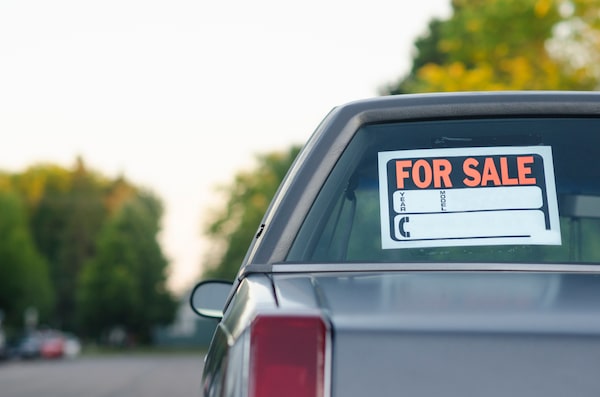
Going from a two-car household to a one-car household can free up a lot of cash, writes Rob Carrick.Sakkawokkie/iStockPhoto / Getty Images
Working at home could help solve one of the great personal-finance problems of our time.
We’re spending too much on vehicles, and now is the right time to do something about it. If you’re part of a two-car household and working at home, consider selling one of your cars when the pandemic ends.
A couple of fairly shocking facts to document the cost of car ownership: The average vehicle cost in 2019 was $40,941, and the average monthly payment on a new vehicle in April was $720.
Lulled by low interest rates and loans lasting as long as seven or eight years, we got in over our heads in car buying. You can help fix this by working at home and thereby eliminating a daily commute.
People with desk jobs have worked at home out of necessity in the pandemic. Not having daycare has complicated life for parents working at home, but the overall concept is an obvious hit with both employers and workers.
The Waterloo, Ont.-based tech company Open Text has said it will not reopen roughly half of its physical office space after the pandemic is over. Bank of Montreal’s chief human resources officer told Bloomberg News last week that as much as 80 per cent of its staff may adopt a post-pandemic work arrangement blending working in the office and at home.
Where working at home was once offered grudgingly by employers, it’s now seen as a way to reduce the cost of office space amid a scary economic slowdown. Employees, you will never have more leverage than you do now to work at home all – or at least part of – the time.
People who work at home during the pandemic are driving less and benefiting in some cases from rebates on car-insurance premiums calibrated to include a daily commute. Getting rid of a car magnifies these savings. Money could be freed up to pay off debt, to add to tax-free savings accounts, registered retirement savings plans and registered education savings plans, and to top up emergency funds.
Personal finance columnist Rob Carrick offers some tips to help you maintain financial flexibility as markets drop and businesses shut down over COVID-19.
The Globe and Mail
The sudden, shocking loss of jobs and income in the pandemic demonstrates the benefit of having cash stowed safely for an emergency. It also shows the benefit of travelling light in life. The fewer financial obligations you have, the more resilient you are if your income is interrupted.
April numbers from J.D. Power show that the average loan payment on cars, SUVs and light trucks averaged $720, up from roughly $650 a year earlier. Let’s lowball car payments for the purpose of this example and set them at $500.
Add $100 to that each month for insurance, $130 for gas (based on $30 per week) and $100 as an averaged amount for maintenance and other fees like licence and registration. Total monthly car costs: $830 for an urban commute. If you travel a significant distance every day, the extra cost in gas and maintenance could easily push you past $1,000 monthly.
Wondering how car payments got so high? Blame the popularity of SUVs and pickup trucks. DesRosiers Automotive Consultants reports that beneath the average $40,941 selling price for vehicles in 2019 was an average of $33,090 cost for cars and an average of $43,565 for light trucks and SUVs.
Downsizing to one car from two will add to your spending through occasional ride-sharing, taxis, car rentals or bus fare. But even if you averaged $200 per month on these costs, you could still easily save $500 per month or more on transportation, or $6,000 annually.
Most opportunities to save money are incremental – by swearing off lattes, bringing your lunch to work every day and buying groceries in bulk. Rare are the moments in life when you can make a single change in your lifestyle that delivers hundreds of dollars you can save and invest.
Without doubt, cars are essential for most households, especially those with young children. But physical distancing has provided us with a vision of life with less driving. If you can stick to it when the pandemic ends, you have the chance for a personal-finance breakthrough.
Need a sweetener to ease into the one-car, work-at-home lifestyle? Put some of your monthly car savings into a travel fund.
Stay informed about your money. We have a newsletter from personal finance columnist Rob Carrick. Sign up today.